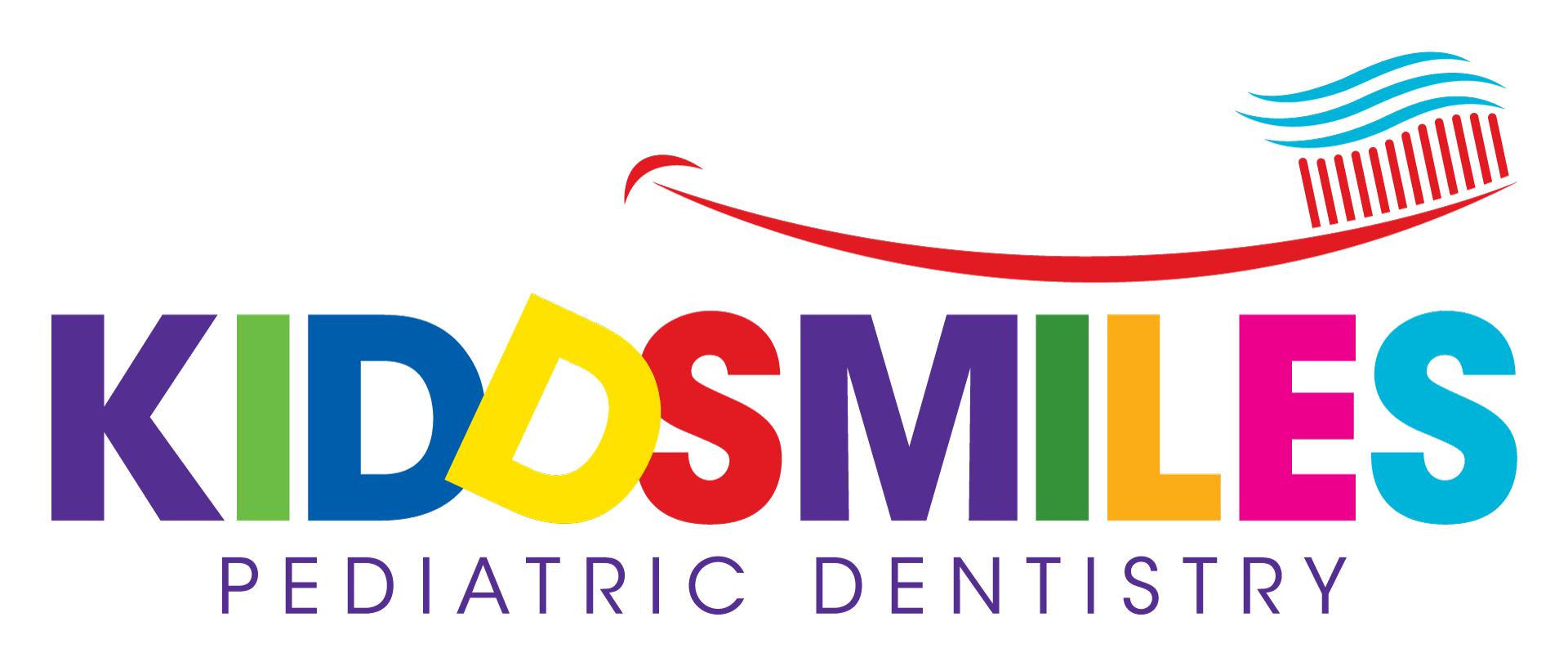FAQ
Frequently asked questions
General Topics
-
What is a pediatric dentist?
Just like the name suggests, a Pediatric Dentist is a dentist who specializes in the care and preservation of children’s teeth. Pediatric Dentists are put through a specialized curriculum and additional training on top of their already rigorous education. This additional education provides a better understanding of the oral health of children. A Pediatric Dentist is best qualified to meet the constantly changing and developing dental needs of infants, children and adolescents as well as those of children with special needs.
-
Why are baby teeth important?
Baby teeth, or primary teeth serve many purposes. They are the natural place-holders for your child’s permanent teeth, meaning that if they come out prematurely, the development and eruption of your child’s permanent teeth can be hindered. The space left behind by prematurely removed primary teeth can lead other primary teeth to drift into the open space left behind, causing something of a traffic jam for the impending permanent teeth. This will increase the probability of orthodontic procedures later in your child’s life. Primary teeth also promote proper nutrition, as they aid your child in biting and chewing his/her food.
-
Eruption of Your Child’s Teeth
Your child’s teeth began forming after birth. At around 4 months, the first baby teeth to erupt through the gums are the lower central incisors. They are usually followed by the upper central incisors. Typically, all 20 baby teeth have appeared by age 3, but the pace and order of these eruptions varies from child to child. Permanent teeth begin to appear around age 6 and the process continues until around age 21.
-
Does your child grind his teeth at night?
Tooth Grinding (Bruxism) is common in children under 7 years old. When a child is young, before permanent teeth are present, their bites are flexible and change as they grow and develop. Children may grind their teeth because of an abnormal bite or placement of teeth. Typically, around the age of 6, permanent molars erupt and the permanent bite begins to establish. When this happens, tooth grinding tends to subside. In middle school and high school-aged children, stress-related tooth grinding is common, especially during testing or final exams. Kiddsmiles monitors children’s bite as well as chipping and wear patterns on their teeth. In the case of Bruxism, Dr. Kaider may recommend treatment or a mouthguard if appropriate.
-
Thumb Sucking
Thumb sucking is a natural reflex for children. Sucking on thumbs, fingers, pacifiers or other objects may make babies feel secure and happy and help them learn about their world. Young children may also suck to soothe themselves and help them fall asleep. After permanent teeth come in, sucking may cause problems with the proper growth of the mouth and alignment of the teeth. It can also cause changes in the roof of the mouth. Pacifiers can affect the teeth essentially the same ways as sucking fingers and thumbs, but it is often an easier habit to break.The intensity of the sucking is a factor that determines whether or not dental problems may result. If children rest their thumbs passively in their mouths, they are less likely to have difficulty than those who vigorously suck their thumbs. Some aggressive thumb-suckers may develop problems with their baby teeth.
-
What is Pulp Therapy?
The pulp in your child’s teeth is the tissue, nerves and blood vessels filling the interior cavity and root canals of a tooth. The function of the pulp is to provide a blood supply with oxygen and nutrients for the tooth. Teeth affected by caries, traumatic injury, or other causes can lead to pulp exposure, pain, and inflammation. When this occurs the primary objective of pulp therapy is to maintain the integrity and health of the tooth and the supporting tissues. This is especially important in young permanent teeth with immature roots, the pulp is integral to the normal development of the apex of the root of a tooth.
-
What is the best time for Orthodontic Treatment?
dentist with additional training, who specializes in aligning and straightening teeth. The best time for your child to get dental braces depends on the severity and the cause of the misalignment of your child’s teeth. Traditionally, treatment with dental braces begins when a child has lost most of his or her baby (primary) teeth, and a majority of his or her adult (permanent) teeth have grown in — usually between the ages of 8 and 14. Some orthodontists recommend what’s called an interceptive approach, which involves the use of dental appliances — not always dental braces — at an earlier age, while a child still has most of his or her baby teeth. Then, when a child has most of his or her adult teeth, a second phase of treatment is started — usually with dental braces. This second phase is thought by some to be shorter than a traditional course of braces if an early treatment has been performed. Orthodontists who favor the traditional approach say that a two-phase approach to treatment actually increases the total time — and sometimes the expense — of orthodontic treatment with generally similar results. However, other orthodontists believe guidance of growth using dental appliances before the second phase of treatment makes correction easier. The best choice for you and your child will largely depend on the severity of your child’s dental problems. Talk with your child’s dentist or orthodontist about the best course of action.
-
Adult Teeth Coming in Behind Baby Teeth
We are often asked about kids growing teeth behind their baby teeth. This occurs because the permanent teeth form behind the roots of the baby teeth and sometimes they grow behind the baby tooth before it falls out. When this occurs most of the time no treatment is needed, nature usually takes care of the situation, but occasionally the baby tooth does have to be extracted (pulled). If your child has a permanent tooth growing behind the baby tooth do not panic, be patient; at the next regular check-up visit, an x-ray may be necessary to determine if any treatment is needed, if you are too concerned to wait for the regular check-up call and make an appointment for a quick check of the situation.
Dental Emergencies
-
Tooth Ache
First, clean around the sore tooth carefully. Using warm salt water, rinse the mouth to clear and food trapped between the teeth. UNDER NO CIRCUMSTANCES should you use aspirin on the aching tooth or gum. In case of facial swelling, apply a cold compress to the area, Acetaminophen or Ibuprofen is recommended in the event of facial swelling. Come in to see is as soon as possible. Facial swelling may be a sign of an abscess and a potentially life-threatening oral facial infection. Typically, once the source of the infection is removed (usually the affected tooth), the infection should subside.
-
Cut or Bitten Tongue, Lip or Cheek
Apply ice to any bruises. In the case of bleeding, apply firm, gentle pressure with sterile gauze or a clean cloth. If pressure does not stop the bleeding, or if bleeding persists after 15 minutes, please contact us or visit the emergency room.
-
Broken Braces or Wires
Only remove a broken appliance if it comes out easily. If it is lodged or painful to remove, cover any protruding or sharp edges with wax, cotton balls, gauze or gum. DO NOT REMOVE any wire lodged in the gums, cheek or tongue; see us immediately. Typically, emergency attention is not required for loose or broken appliances that cause no pain or discomfort.
-
Broken Tooth
Rinse the area with warm water. Put a cold compress over the facial area of the injury. Recover any broken tooth fragments. Get immediate dental attention from any of our specially trained kid dentists.
-
Knocked Out Permanent Tooth
Recover the tooth, if possible, making sure to hold it by the crown (top) and not the root end. Rinse, but do not clean or handle the tooth more than necessary. Reinsert the tooth in the socket and hold it in place using a clean piece of gauze or cloth. If the tooth cannot be reinserted, carry it in a cup containing the patient’s saliva or milk. Water is less favorable than milk but better than letting the tooth dry out. Because time is essential, see us immediately. Baby teeth that are knocked out prematurely do not need to be reinserted and harm may be caused to the underlying permanent teeth by so doing.
-
Possible Broken Jaw
In case of jaw injury, immobilize the jaw with a towel, tie or handkerchief and go immediately to the emergency room.
-
Bleeding After a Baby Tooth Falls Out
Fold a piece of gauze and place it (tightly) over the bleeding area. Bite down on the gauze for 15 minutes; if bleeding continues, please contact our office immediately.
-
Dental X-Rays
Every child is unique and different, so the x-rays needed for one child may be different for another child of the same age. However, the American Academy of Pediatric Dentistry, as well as the American Dental Association recommend that children have x-rays taken by age 3 or 4 to evaluate growth and development. This may involve taking one x-ray of the upper front teeth and one of the lower front teeth, as well as one on each side, depending on how many teeth a child has. X-rays of upper and lower teeth do not need to be taken again at each check-up, unless the child has had trauma to a front tooth. X-rays of back teeth should be taken at a minimum of once/ year if the back molars are touching each other. The sides of these teeth cannot be visualized with a dental exam, and often the only way to identify decay is with an x-ray. Decay damages children’s teeth at a faster rate than permanent teeth, and when untreated can cause severe infection.
Early Infant Oral Care
-
Perinatal & Infant Oral Health
FMaternal cariogenic bacteria is linked with a wide range of adverse outcomes for infants and young children. For this reason, the American Academy of Pediatric Dentistry (AAPD) advises expectant mothers to get dental checkups and counseling regularly.Here are some perinatal oral care tips for expectant mothers:
Brush and floss – Be sure to use an ADA approved, fluoridated toothpaste at least twice each day, and floss at least once each day, to eliminate harmful oral bacteria.
Chew gum – Xylitol, a natural substance, has been shown to reduce infant and toddler caries (cavities) when chewed 3-5 times daily by the expectant mother.
Diet evaluation – Maintaining a balanced, nourishing diet is always important, but particularly so during pregnancy. Sugars and starches provide food for oral bacteria, and also increase the risk of tooth decay.
Make regular dental appointments – The dentist is able to check the general condition of teeth and provide strategies for reducing oral bacteria.irst, clean around the sore tooth carefully. Using warm salt water, rinse the mouth to clear and food trapped between the teeth. UNDER NO CIRCUMSTANCES should you use aspirin on the aching tooth or gum. In case of facial swelling, apply a cold compress to the area, Acetaminophen or Ibuprofen is recommended in the event of facial swelling. Come in to see is as soon as possible. Facial swelling may be a sign of an abscess and a potentially life-threatening oral facial infection. Typically, once the source of the infection is removed (usually the affected tooth), the infection should subside.
-
Your Child’s First Dental Visit – Establishing a Dental Home
Our office, The American Academy of Pediatric Dentistry (AAPD), and the American Dental Association (ADA) support establishing a “Dental Home” for your child. The “Dental Home,” refers to the ongoing relationship between the Primary Dental Care Provider and your child (their patient), including comprehensive dental health care beginning no later than the age of one year.Your child’s first visit to the dentist can be an exciting and fun experience, and here are a few ways to ensure that.
If possible, inform your child of the visit and tell him or her that the dental staff will explain all the procedures before they are done and will answer any questions that they have.
Refrain from using words that may inspire fear (needle, hurt, pain, drill) when talking about the dentist.
Parents are welcome to accompany children during their initial exam, but during future appointments, it is suggested that you allow your child to experience the exam under the watchful eye of our staff. It is much easier for our dental staff to establish a close rapport with your child when you are not present. We aim to gain your child’s trust and overcome fear and apprehension. However, you are welcome to join us in the exam room if it makes you more comfortable. Please note that in the interest of the safety and privacy of our patients, children not being treated must remain in the reception room with a supervising adult.
-
When will my baby start getting teeth?
Teething usually begins around 6 months of age. But it is normal for teething to start at any time between 3 months and 12 months of age. By the time your child is about 3 years old, he or she will have all 20 primary teeth.
The lower front teeth usually come in first. Upper front teeth usually come in 1 to 2 months after the lower front teeth.
-
What type of toothpaste should we use?
The most effective way to remove plaque and debris from your child’s teeth and gums is teeth brushing – it is the most important step in ensuring your child has a healthy mouth. Toothpaste comes in a wide breadth of forms and flavors. If your child is able to clear all of the toothpaste from his/her mouth, then a fluoride toothpaste is the best option. However, if your child is not able to spit out all of the toothpaste, a SMALL AMOUNT of fluoridated toothpaste of a small amount of “safe to swallow” toothpaste is the best option. By “small amount” we mean just enough to cover the bristles of your child’s toothbrush. Examine the toothpaste labels to ensure that it is tested and approved by the American Dental Association – if it is, the toothpaste label will bear the ADA seal. Please keep in mind that swallowing excess fluoride can be harmful to your child, so keep toothpastes out of his/her reach.
-
Baby Bottle Tooth Decay
Baby bottle tooth decay is caused by the frequent and long-term exposure of a child’s teeth to liquids containing sugars. Among these liquids are milk, formula, fruit juice, sodas and other sweetened drinks. The sugars in these liquids pool around the infant’s teeth and gums, feeding the bacteria in plaque. Every time a child consumes a sugary liquid, acid produced by these bacteria attack the teeth and gums. After numerous attacks, tooth decay can begin.
-
Sippy Cups
Most parents are well aware of the importance of taking care of their children’s teeth, so it comes as a shock when they learn their toddlers have cavities during a checkup. Tooth decay among young children is on the rise—and many experts believe that sippy cups containing sugary beverages are responsible.






